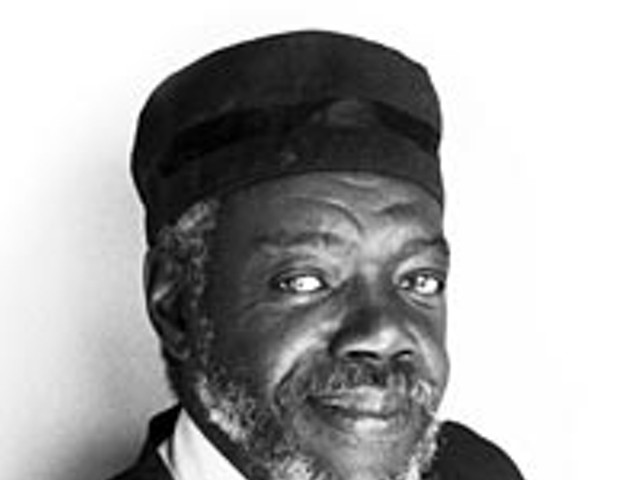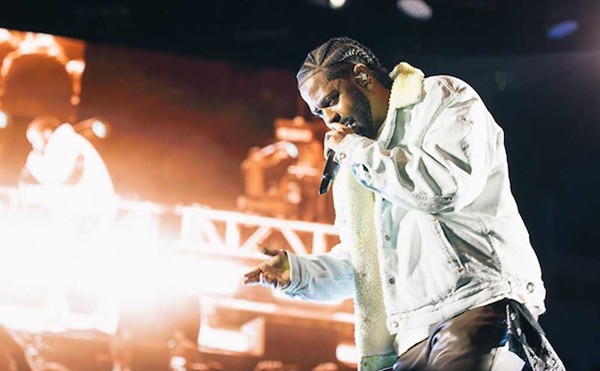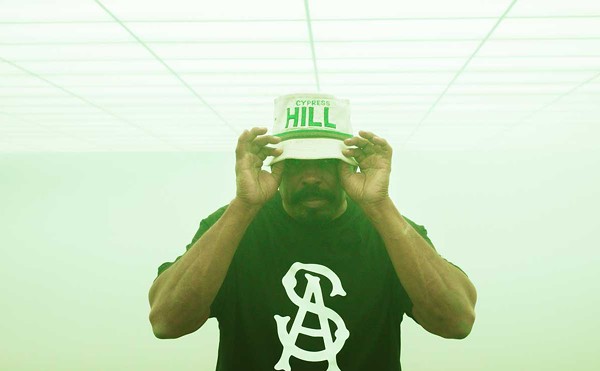The Free Slave (32 Jazz) is the only disc by “drummist” Roy Brooks that’s widely available. It catches a live 1970 set with a band of stellar hard boppers that includes a then-up-and-coming trumpeter, the very young Woody Shaw, plus George Coleman, Hugh Lawson and Cecil McBee. McBee and Brooks lay down a funky, intelligent groove and the band burns brightly through four extended tunes. (Samples of the disc can be heard at amazon.com.)
Duet In Detroit (Enja) is worth looking for in used bins and on the Web. It’s a collection of duets that pairs Brooks with three remarkably creative and different pianists — Geri Allen, Randy Weston and Don Pullen — as well as with Shaw. This exceptionally varied, satisfying collection of duets was recorded mostly at the Detroit Institute of Arts in the late 1970s and early ‘80s.
Bemsha Swing (Blue Note), an excellent Woody Shaw disc featuring Brooks and recorded live at Baker’s Keyboard Lounge, is also out of print but worth searching for. The double disc features Detroiters Geri Allen and Bob Hurst as well; this is such a burner in no small part thanks to how hard Brooks pushes the rest of the band.
Vinyl treasures well worth the search include a number of sessions with the Artistic Truth Band, including Live at Town Hall (Bay State), Ethnic Expressions (Im-Hotep), Black Survival (Im-Hotep), and The Smart Set (Bay State).
The Aboriginal Percusion Choir never released a recording, but Brooks is on two of Max Roach’s M’Boom records, clearly precursors to Brooks’ own group. Re: Percussion and Collage (Columbia) offer performances that are beguiling in their beauty and unstoppable in their grooves; each features a composition by Brooks. These discs are available used.
Brooks’ earliest works with Dollar Brand (later known as Abdullah Ibrahim), Yusef Lateef and Horace Silver are fairly easy to find. Dollar Brand’s African Space Program (Enja) may have helped inspire Brooks to launch his one-man show, the Mystical Afronaut. Lateef’s The Blue Yusef Lateef and The Man With the Big Back Yard (Atlantic) — the latter a compilation of four other classic 1960s albums — display the wide-ranging, exotic musical horizons that Brooks continued to explore on his own.
Three Silver albums — Horace-Scope, Silver’s Serenade and Song for My Father (Blue Note) — capture several of Silver’s polished quintets, all with Brooks at the batterie. One listen to any of these demonstrates why Silver’s was the most popular band of the hard-bop era — and how important Brooks’ backbeat was to the development of what came to be called “funky jazz.”
Finally, videos of Brooks describing his approach to drumming, playing the musical saw, performing with wind-up toys and performing on steel drums can be viewed in an exhibit in the University of Michigan’s Internet Public Library (www.ipl.org/exhibit/detjazz/).

More on Roy Brooks:
Music, madness & Marquette prison
Lock 'em up





